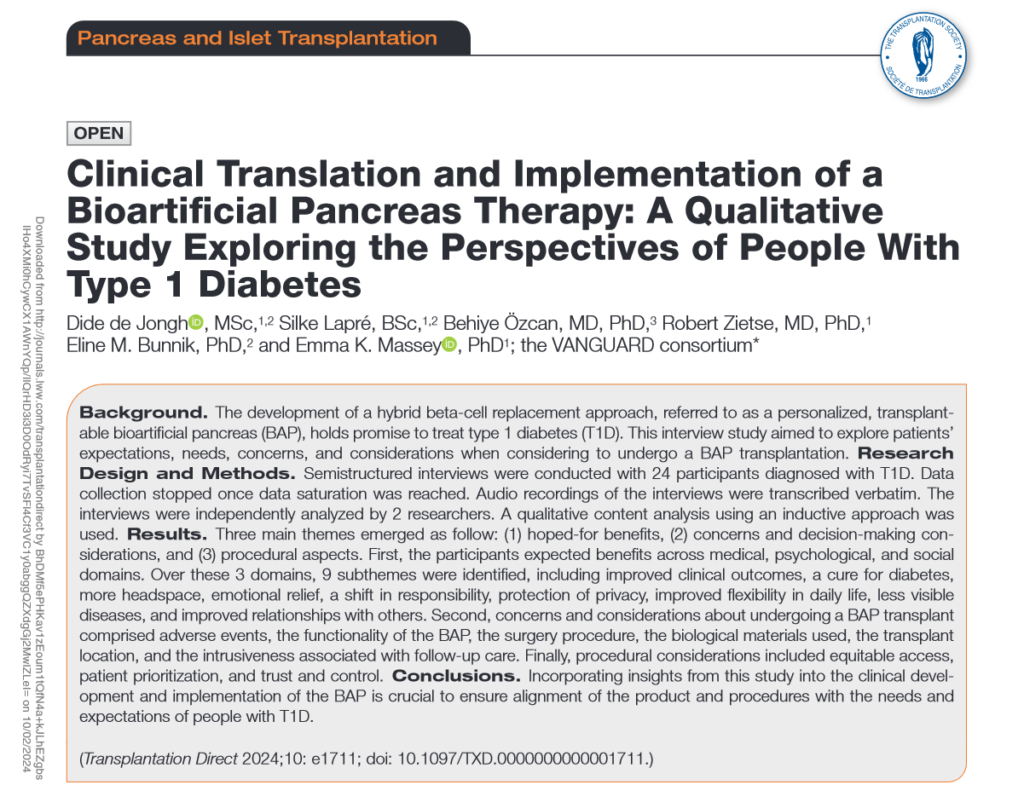A new VANGUARD article titled “Clinical Translation and Implementation of a Bioartificial Pancreas Therapy” has been published in Transplant Direct. This publication is openly accessible online at the following link: Transplant Direct.
This study marks the first qualitative investigation on this subject. The authors are honoured to contribute to the scientific community by amplifying the voices of patients through this publication. The abstract of this publication can be found below.
Background.
The development of a hybrid beta-cell replacement approach, referred to as a personalized, transplantable bioartificial pancreas (BAP), holds promise to treat type 1 diabetes (T1D). This interview study aimed to explore patients’ expectations, needs, concerns, and considerations when considering to undergo a BAP transplantation.
Research Design and Methods.
Semistructured interviews were conducted with 24 participants diagnosed with T1D. Data collection stopped once data saturation was reached. Audio recordings of the interviews were transcribed verbatim. The interviews were independently analyzed by 2 researchers. A qualitative content analysis using an inductive approach was used.
Results.
Three main themes emerged as follow: (1) hoped-for benefits, (2) concerns and decision-making considerations, and (3) procedural aspects. First, the participants expected benefits across medical, psychological, and social domains. Over these 3 domains, 9 subthemes were identified, including improved clinical outcomes, a cure for diabetes, more headspace, emotional relief, a shift in responsibility, protection of privacy, improved flexibility in daily life, less visible diseases, and improved relationships with others. Second, concerns and considerations about undergoing a BAP transplant comprised adverse events, the functionality of the BAP, the surgery procedure, the biological materials used, the transplant location, and the intrusiveness associated with follow-up care. Finally, procedural considerations included equitable access, patient prioritization, and trust and control.
Conclusions.
Incorporating insights from this study into the clinical development and implementation of the BAP is crucial to ensure alignment of the product and procedures with the needs and expectations of people with T1D.

